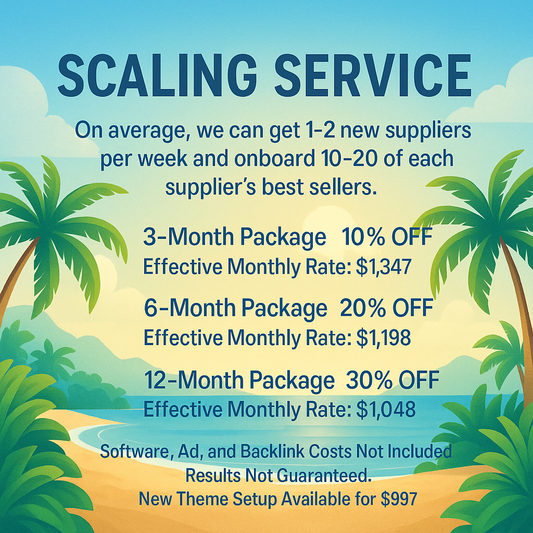
Best Video Hosting Sites for Businesses and Creators in 2025
Many people need a good place to share and store their videos online, whether for work, school, or fun. With so many choices, it can be hard to know which video hosting site is right. This blog post lists the best video hosting sites so readers can easily compare options and find the one that fits their needs, especially if they’re using video content for purposes like marketing, ecommerce SEO, or online education.
Some sites are good for simple sharing, while others are better for editing or hosting big files. The right choice can save time, make videos look better, and help them reach the right audience. This guide highlights the key features and benefits of each platform to help readers make an informed decision.
Quick List: Best Video Hosting Sites
- YouTube
- Vimeo Pro
-
Dailymotion
- Wistia
- Brightcove
- Kaltura
- HeyGen
- Spotlightr
- SproutVideo
- Uscreen
- Dropbox Video Hosting
- Jetpack
- Canva
What Is Video Hosting?
Video hosting lets people and businesses upload, store, and share videos online. These services help users manage their video files and make them easy for others to watch from anywhere with an internet connection.
How Video Hosting Works
When a user uploads a video to a hosting site, the platform stores the file on its own servers. The host then processes the video, changing the format if needed so that it plays well on different devices.
Most hosts create multiple file versions in different qualities. For example, viewers on slow internet connections can watch lower-quality streams, while those with fast internet can stream in high definition.
Platforms usually provide an embed code or link. This lets users add the video to their website, blog, or share it on social media easily. Some services let users control who can view their videos by setting privacy levels.
Popular hosting platforms include:
| Platform | Key Feature |
|---|---|
| YouTube | Free uploading |
| Vimeo | High-quality video |
| Wistia | Business features |
Benefits of Video Hosting
Video hosting sites manage all of the hard work, so users do not need their own servers or lots of storage space. This makes it simple for anyone to share video to a wide audience.
Good hosting platforms offer tools like analytics. These show how many people watch each video, where viewers are from, and how long they watch.
Many sites support different file formats and devices, making it easy for viewers to watch on phones, tablets, or computers. Some video hosting services protect content with password controls or let users choose who can view their videos.
Extra features like playlists, captions, and custom branding help users offer a better viewing experience for their audience.
Key Features to Look for in Video Hosting Sites
When picking a video hosting site, it is important to check the quality and reliability of the streams, how much the look and feel can be customized, and what controls exist for security and privacy. Each of these features affects how viewers experience the content and how owners manage their videos.
Video Quality and Streaming Performance
High-quality video improves the viewing experience and can keep people engaged for longer. A good hosting site should support HD and even 4K resolution. Fast and stable streaming is also key. Look for sites that use Content Delivery Networks (CDNs). These speed up video load times by storing copies of videos across different locations.
It is helpful if the site offers adaptive bitrate streaming. This lets the video quality adjust to fit the viewer’s internet speed, so there are fewer pauses or buffering. Uptime is another important factor. The best platforms are reliable and work around the clock.
Below is a table showing useful features to look for:
| Feature | Importance |
|---|---|
| HD/4K resolution | Crisp, clear image |
| Adaptive bitrate streaming | Smooth playback |
| CDN support | Faster streaming |
| High uptime | Reliable access |
Customization and Branding Options
Businesses and content creators often want to match videos to their brand. The ability to add logos, colors, and customized players is helpful. Some hosting platforms allow users to pick player shapes, button styles, and even fonts.
Customizable video thumbnails and call-to-action buttons can improve engagement. Embedding options matter too. Good platforms let users control where and how their videos appear, such as embedding on websites or sharing on social media.
Below is a quick list of useful customization features:
- Logo and watermark support
- Custom player colors and style
- Choose video thumbnails
- Embedding control options
- Add call-to-action buttons
Security and Privacy Controls
Keeping videos safe is important, especially for sensitive or paid content. Look for password protection, private links, and domain restrictions. These stop unauthorized viewers from watching or sharing protected videos.
Some platforms allow tokenized URLs that expire after a short period. Encryption and Digital Rights Management (DRM) add even more security. Site owners may also want to control who can download or embed their content elsewhere.
Important security features to check:
- Password or login-protected videos
- DRM and encryption
- Expiring links
- Domain restrictions
- Download controls
Best Video Hosting Sites Compared
Choosing the right video hosting platform depends on your needs, like ease of use, audience size, storage, customization, and privacy options. Each site offers different features for creators, businesses, and viewers.
YouTube
YouTube is the largest video hosting site, with over 2 billion users each month. It is free to use and lets anyone upload videos after creating an account.
Key features:
- Unlimited uploads
- Basic video editing tools
- Monetization options through ads
YouTube supports full HD, 4K, and live streaming. Videos can be made public or unlisted. The platform has a broad audience, so it’s easy to get views if content is engaging. It also includes analytics for tracking video performance.
Downsides:
- Heavy competition
- Limited control over branding
- YouTube ads can appear on your videos unless you pay for YouTube Premium
YouTube is best for anyone who wants to reach a huge audience without paying for hosting.
Vimeo Pro
Vimeo Pro is a paid service aimed at professionals and businesses. It’s known for high video quality and clean design.
Key features:
- Ad-free videos
- Customizable video player
- Advanced privacy controls
- Up to 20 GB uploads per week (with Pro plan)
Vimeo Pro offers better branding options than YouTube. Users can adjust the look of the video player and embed videos without Vimeo’s logo. Privacy controls allow for password-protection and domain-level embedding, which is useful in client presentations or business websites.
Vimeo Pro also provides detailed video analytics and strong customer support. This platform suits creators who want to showcase work in a more controlled environment.
Dailymotion
Dailymotion is a video hosting site based in France. It has a global audience and supports both free and paid accounts.
Key features:
- Up to 2 hours of video per upload
- Monetization available
- Supports HD video up to 1080p
- Basic analytics
The platform is less crowded than YouTube, which may help new creators get noticed. Dailymotion allows fewer ads than YouTube, and there is some control over video placement.
It is popular in Europe and offers localized content. Dailymotion’s interface is simple, but it does not have as many advanced features as Vimeo Pro. It is best for those who want an alternative to YouTube with some extra privacy controls.
Premium and Business-Focused Video Hosting Platforms
Premium video hosting platforms offer advanced features for companies that need secure, professional video delivery. These services provide detailed analytics, custom branding, marketing tools, and strong support for integrations.
Wistia
Wistia focuses on businesses looking for easy-to-use video marketing tools. It offers clean video embeds, custom branding, and interactive features like calls-to-action.
One benefit is detailed analytics. Users can see viewer engagement, heatmaps, and track leads that come from their videos.
Wistia supports integrations with CRM and email marketing software, making it simple to connect video data with other tools. The platform is designed for small to medium businesses that want to look professional without extra work.
Plans start with a free option, but most business-focused features are paid.
Key Features:
- Customizable video players
- Lead capture forms
- Analytics and viewer tracking
- Integrations with popular marketing tools
Brightcove
Brightcove is known for working with large companies and organizations. It provides high-quality streaming, live event support, and strong privacy controls.
With Brightcove, companies can host and manage thousands of videos. The platform delivers fast, reliable playback even with big audiences.
Brightcove includes advanced tools like video monetization, ad insertion, and DRM protection. It supports building branded video portals and internal communications.
Main Advantages:
- Global content delivery network (CDN)
- Customizable playlists and portals
- Security and access controls
- Monetization options
Brightcove is best suited for enterprises with large-scale needs and bigger budgets.
Kaltura
Kaltura offers a flexible platform that is popular in both business and education. It can be self-hosted or cloud-based. The software supports both live and on-demand video with detailed access controls.
Kaltura has strong tools for collaboration, including multi-user access and workflow management. It can be used for everything from training videos to company announcements.
The platform integrates with many learning management systems (LMSs) and business apps. Kaltura is open source, so organizations can customize features as needed.
Notable Features:
- Support for live and recorded content
- API access for custom development
- Extensive integration options
- Role-based permissions and security
Kaltura works well for companies needing flexible, scalable video solutions.
Emerging and Niche Video Hosting Solutions
Some video hosting platforms are designed for very specific needs, like generating AI content or offering advanced analytics. Others focus on privacy or branded viewing experiences for businesses or educators.
HeyGen
HeyGen is a video platform built around artificial intelligence and video generation. Its main feature is the ability to create high-quality talking head videos by typing in text. Users can access many digital avatars, voices, and languages. This helps companies create product demos, explainer videos, or training content without hiring actors.
A key benefit of HeyGen is its speed. Videos are generated in minutes, and users can customize backgrounds or brand details. Pricing is tiered, with free trials and paid plans for extra features. Many teachers, marketers, and small businesses use HeyGen for its easy workflow and support for multiple languages.
Key features:
- Text-to-video AI
- Dozens of avatars
- Support for over 40 languages
- Branded video options
Spotlightr
Spotlightr is a video hosting solution aimed at businesses, teachers, and online creators who want to control the viewer experience. It lets users add interactive tools to videos, like quizzes, annotations, or call-to-action buttons. The platform supports detailed analytics showing who watched which videos, for how long, and what actions they took.
Spotlightr is also known for its privacy controls and flexible branding. Videos can be embedded without third-party ads or unrelated content. The platform includes tools for gating content, requiring logins, or setting access rules. Spotlightr works with both live and on-demand videos.
Key features:
- Customizable video player
- Privacy and access controls
- Advanced video analytics
- Interactive overlays and calls-to-action
SproutVideo
SproutVideo is a video hosting service for businesses needing private, secure, and professional online video. The platform emphasizes security, with options like password protection, signed embed codes, and detailed viewer tracking. Companies use SproutVideo to host training videos, webinars, and promotional clips without making them public.
Other important features include customizable video players, branding tools, and integrations with marketing services. SproutVideo tracks detailed viewer analytics, which helps businesses measure engagement and improve content. It also offers video websites, which let users create branded video libraries without needing extra developers.
Key features:
- Strong privacy settings
- Custom video players
- User-friendly analytics
- Video website builder for custom libraries
Video Hosting for Monetization and Online Courses
Video hosting platforms offer creators ways to earn money by selling courses, memberships, or access to content. Some sites focus on features that help teachers and trainers manage payments, track student progress, and protect videos from unauthorized access.
Uscreen
Uscreen is a video hosting platform built mainly for selling online courses and subscriptions. It lets creators upload videos, set prices, and offer content as one-time purchases or recurring memberships.
Key Uscreen features include:
- Built-in payment processing (Stripe, PayPal)
- Customizable branded website and app
- Tools for selling bundles, subscriptions, and PPV (pay-per-view)
- Secure video streaming and DRM protection to limit piracy
- Analytics to track views, sales, and audience engagement
Uscreen supports integrations with marketing tools like Mailchimp and Zapier. It also offers mobile and OTT (TV app) support so users can access content on smartphones, tablets, and smart TVs.
Cloud-Based and Integrated Video Hosting Options
Cloud-based and integrated platforms offer unique features for video hosting. These services make it simple to store videos, share links, and embed content across different websites and social networks.
Dropbox Video Hosting
Dropbox is known for its easy cloud file storage, but it can also host video files. Users upload videos to their Dropbox account and share them with a link or by embedding them on websites.
There is no built-in player customization, but videos can be played directly in the Dropbox web player. Dropbox supports many file formats including MP4 and MOV. The sharing process is quick and does not require viewers to have a Dropbox account.
Plans come with storage limits. Free accounts offer up to 2GB, and paid plans provide more space. Those who need simple link sharing or cloud backup will find Dropbox helpful. It works well for short video clips and presentations.
Pros:
- Simple file sharing
- Supports many formats
- Reliable cloud storage
Cons:
- Limited video customization
- Bandwidth limits for free users
Jetpack
Jetpack is a WordPress plugin that adds many features, including integrated video hosting. VideoPress, Jetpack’s video hosting tool, lets users upload videos directly to their WordPress site without outside services.
Videos hosted through Jetpack do not show ads and are easy to embed in posts or pages. The plugin allows basic privacy and playback settings. Uploads are quick, and files are stored securely on WordPress.com servers.
Jetpack requires a paid plan for video hosting. Storage space varies by plan, so users who often upload large videos may need to upgrade. Jetpack is a strong choice for bloggers, small businesses, and educators using WordPress.
Key Features:
- No video ads
- Fast uploads and playback
- Integrates with WordPress posts and pages
Canva
Canva is popular for graphic design and also supports video creation and hosting. Users can upload videos or create them inside Canva’s editor using templates, animations, and stock footage.
Once a video is finished, it can be shared through a link or embedded on other sites. Canva does not provide a public video gallery like YouTube. Instead, it is focused on sharing project-based or branded content for presentations, social posts, and marketing.
Canva’s free version supports basic video exports, but premium plans allow for longer export times, higher resolutions, and additional tools. Businesses often use Canva to maintain brand consistency across video and graphic content.
Highlights:
- Built-in video editing tools
- Customizable templates and branding
- Direct sharing and embedding options
How to Choose the Right Video Hosting Site for Your Needs
Choosing the right video hosting site depends on what a person or business needs most.
Key things to consider:
- Video quality and upload limits
- Cost and available plans
- Privacy and security
- Ease of use
- Support for mobile and different devices
Price is important for many people. Some sites are free but may show ads. Others charge a fee but offer more features and support.
A simple table can compare some popular features:
| Feature | Free Sites | Paid Sites |
|---|---|---|
| Ads | Yes | No |
| Storage Limit | Low/Medium | High |
| Custom Branding | Limited | Full |
| Analytics | Basic | Advanced |
Think about who will watch the videos. Some platforms are better for public sharing. Others let users keep videos private or share by invite only.
It is smart to check if the site works well on phones and allows easy uploads. Support can also make a difference, especially for businesses that need quick help.
By thinking about these points, users can find a hosting site that matches their needs.
Conclusion
Choosing the right video hosting site depends on many factors. Users should consider needs like storage space, bandwidth, audience size, and privacy controls.
Popular options include:
- YouTube: Free, easy to use, high reach
- Vimeo: Strong for businesses, better privacy
- Wistia: Marketing tools, advanced analytics
- Dailymotion: Large audience, fewer restrictions
Some sites are a better fit for personal videos. Others work well for schools or companies.
A simple comparison table helps show differences:
| Site | Price | Best For | Main Features |
|---|---|---|---|
| YouTube | Free | Wide audience | Monetization, live |
| Vimeo | Paid/free | Professionals | Portfolios, privacy |
| Wistia | Paid | Businesses | Marketing, branding |
| Dailymotion | Free | Creators | Good reach, interface |
Users should try free versions before paying for extra features.
It’s important to check upload limits, ads, and video quality before choosing.
Reading reviews and checking support options can help pick a reliable platform that fits the user’s goals.















